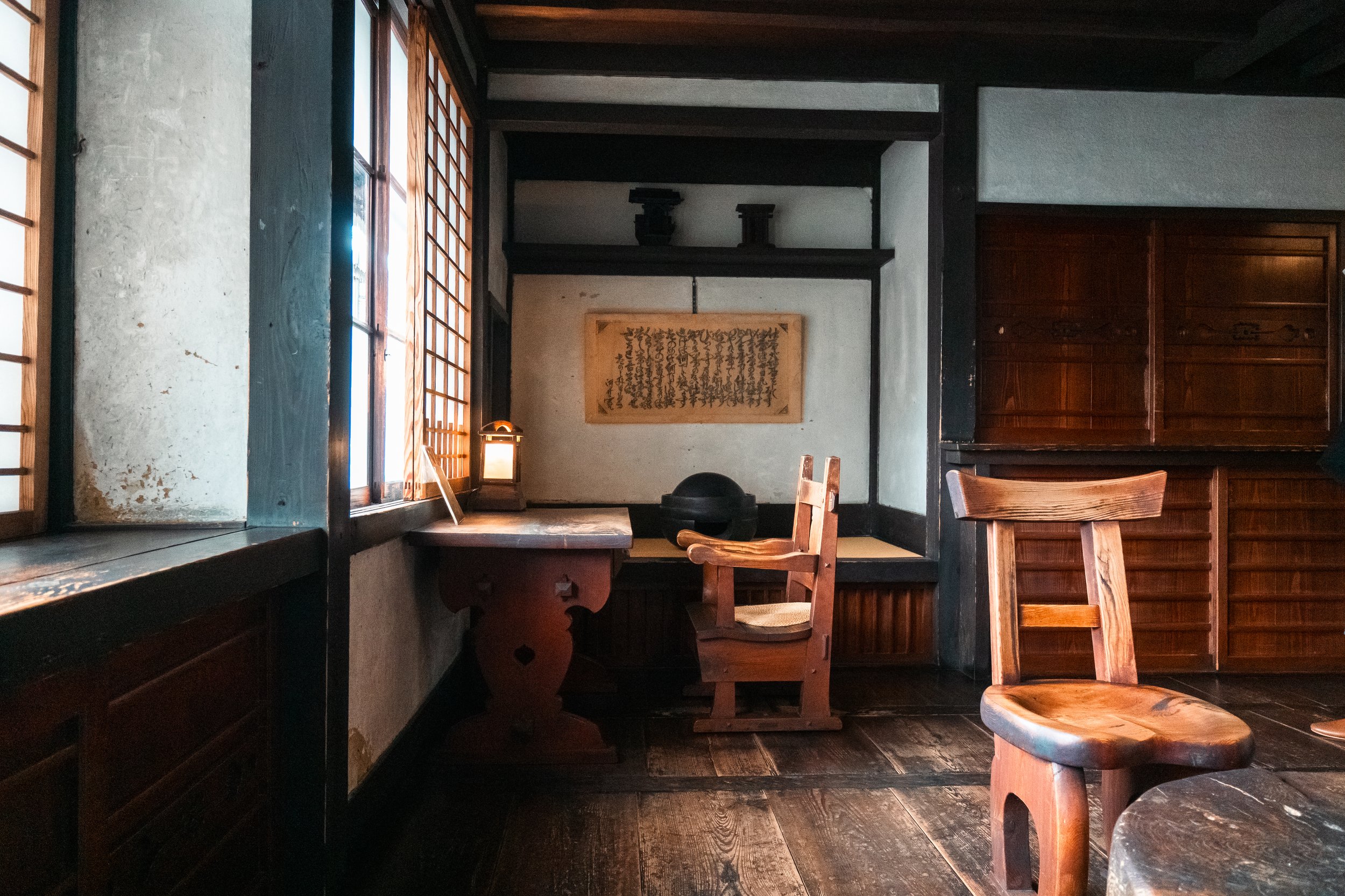Kyoto Discovery - Kawai Kanjiro’s House
Part Kyomachiya, part rustic country house. One of very few original Kyoto residences open to the public.
If you like design, art and architecture, a visit to Kawai Kanjiro's house will not disappoint. It's a rare opportunity for discovering the authentic style and humanity of a wonderful Japanese artist who influenced generations of potters and craftsmen.
Extraordinary Man and House
Kanjiro (河井寛次郎 1890-1966) not only designed the house that he lived in since the 1930s, but also crafted most of the furniture and artwork that gave this memorial museum its unique character and style.
Part Machiya townhouse and part rustic country home, it is one of very few original Kyoto residences open to the public. With characteristic wooden lattices on the facade, patinated floorboads and beams, a bucolic hearth, Westernised furniture and endless windows and shoji panels creating a dynamic play of light and shadows, the house showcases a subtle fusion of Japanese and Western style architecture.
Charming Home, Living Museum
Left exactly as it was when Kanjiro lived in it with his children and grandchildren, the home features his vast body of work which includes ceramics, sculpture, wood carvings and calligraphy, as well as his collection of craft made by unknown country people from Japan and abroad.
Original Furniture, Creative Design
Touring this living museum is like visiting a friend's home, dotted with freshly arranged flowers in colorful vases and baskets. There are no ropes and cordoned off areas. You can stroll about at your own pace, touch the artworks, feel the furniture, pet the cat. Try sitting at the artist's desk, and you'll marvel at how ergnomical his chair is!
Kanjiro's grand-daughter Sagi Tamae, who turned the house into this museum after his death, gave many talks on Kanjiro's life and works. She told interviewers that her family wanted visitors to experience a sense of openness, and to feel that the house was a place where one could spend time rather than just looking at things.
“Eyes of a scientist, heart of a poet.”
"When you use or touch things, they tend to break or change. But that's only natural, since Kanjiro himself was a person who believed that tangible objects would eventually disappear," Ms Sagi told "life x art" in an interview. She described her grandfather as someone who had "the eyes of a scientist and the heart of a poet."
As one of the founders of Japan's Mingei, or Folk Craft movement, Kanjiro played a key role in reviving traditional craftsmanship at a time when "higher" forms of art were valued over daily life wares made by local artisans.
Home with Kilns
Setting his sights on a large climbing kiln in Gojozaka, an area where pottery had developed for hundreds of years, he moved from his native Shimane prefecture to Kyoto, took out a loan, acquired the kiln and built his home around it.
With the kiln, Kanjiro would develop his own style, which evolved from an early imitation of Chinese and Korean porcelain to the simple, functional craft of the Mingei movement, to his own inimitable style not bound by any conventions.
The Fire Goes Out - End of an Era
The kiln, built on a slope with 8 chambers (so that heat can rise up economically), was shared with some 20 families in the neighborhood. As Ms Sagi recalled in an interview on the website gojo-chawanzaka.jp, children would play hide and seek around the kiln when it was not in use. Once every month or 2, the kiln would be fired up. Craftsmen would bring their wares to bake. The burning reached some 1,300° C and took up to 48 hours. Everyone would wait with bated breath for the unpredicatable results.
The artisans plying the pottery craft were a close-knit community, with skills and discoveries passed down over many generations. Kanjiro continued working and inspiring local and foreign craftsmen till the end of his life. Five years later, in 1971, Kyoto put an end to the use of kilns in the city, and the fire of the Kawai Kanjiro house went out forever.
My Work is My Best Signature
According to researcher Yoshiko Uchida, who wrote a booklet titled "We do not work alone" based on her conversations with Kanjiro, his son and other contemporary potters, Kanjiro was "a man who understands and respects the dignity of simplicity... He has a profound love for the unpretentious men of the soil and has made their simplicity a part of himself."
He lived simply, left no signature on his works, and declined all official honors including the designation of Living National Treasure. All his life he encouraged potters and paper makers to keep their art alive, and even helped them find venues for showing and selling their works at a time when only the more refined Chinese and Korean porcelain were in demand.
Gradually the public began to appreciate local and regional works, and instead of losing steam under the weight of rampant modernisation in Kanjiro’s time, rustic, country-style pottery and ceramics found new expression and seem to be flourishing to this day.


















